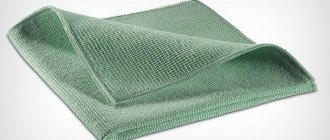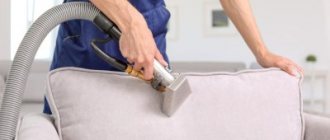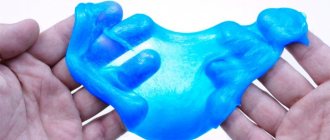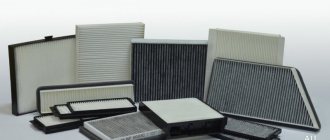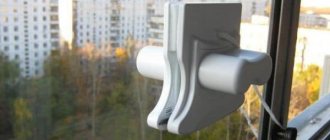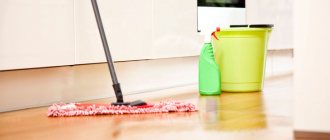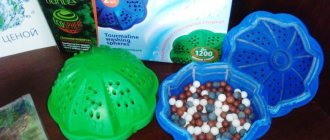When cleaning your home, you can't do without rags.
In addition to rags, it is convenient to use ready-made napkins, which allow you to clean quickly and efficiently, while spending less effort. In order to achieve maximum results, you need to know how to choose a cleaning cloth and how to handle it so that you can use it longer.
Selection rules
Indoor cleaning cloths are designed for different purposes, and the requirements for them are different. It is also important to consider the specifics of cleaning. This could be an urgent removal of one stain on the surface or, for example, a full wash.
For floor
Floor cleaning always includes wet treatment. Depending on the circumstances, this may be followed by wiping the surface dry.
The purpose of floor washing is high-quality cleaning of the surface, including all microcracks. For these purposes, a large rag with good absorbency should be selected - microfiber or viscose.
For kitchen
Cleaning surfaces in the kitchen means dealing with complex stains from food residues, grease, splashes of water, etc. For these purposes, rags made of cellulose or bamboo are chosen .
For glass
Window cleaning combines the care of frames and glass.
When processing smooth, and especially glass surfaces, exposure to abrasives and rags with a hard surface should be excluded. Glass washing begins with primary treatment to wash away the main dirt. To do this, choose napkins with good moisture absorption .
It is better to choose a medium size so that it is comfortable to hold in your hand. The material can be viscose, latex, microfiber.
For tiles
Ceramic tiles require high-quality and fairly intensive care. For these purposes, it is advisable to use rags that can clean microcracks and even seams. In addition, the cleaning agent must have good moisture-absorbing ability, such as cellulose.
For furniture
To care for furniture, it is convenient to use fairly large rags, which can be used without pre-wetting. The use of wet cleaning can only be limited, on surfaces that allow it. The best option is viscose napkins, cellulose or microfiber .
For household appliances
Caring for household appliances requires extreme care to ensure that water and detergents do not get inside the housing. It is better to choose small napkins.
For dishes
For washing dishes and cleaning them efficiently, one of the best rags is bamboo . This napkin does not accumulate odors, does not become greasy and does not become a breeding ground for mold.
Dust should be wiped off correctly
Dust on flowers
Experienced housewives know that maintaining cleanliness is a difficult process. Several hours pass, and the smallest particles again fall onto the polished surfaces. They are the ones who are interested in how to wipe wooden surfaces in rooms to prevent dust from settling. Tips on how to properly wipe dust in an apartment are given below:
- The first rule of cleaning is to clean the ceiling. It is difficult to reach the ceiling: in city apartments it is high. You can use a flat mop. If you don’t have such a tool, you should wrap a wet rag around a broom or simple mop. It is also necessary to carefully treat problem areas of the room - the corners where the greatest amount of dirt accumulates. The ceiling needs to be cleaned once a month.
- Use a damp cloth soaked in alcohol to wipe onto lampshades and chandeliers.
- Dirty walls and wallpaper darken, which means you need to clean them and then wipe them with a damp cloth.
- The furniture walls are treated from above, the shelves inside the cabinets are wiped, from top to bottom.
- A lot of dirt accumulates on window sills.
- Plasma TV, due to static voltage, attracts a large number of dust particles. You can wipe off dust on household appliances with a dry, soft piece of flannel.
- Indoor plants can help in the fight for cleanliness. The leaves of plants (ficus, dracaena, rapeseed, shefflera, chlorophytum) absorb and neutralize dust microparticles. But if there is a dusty smell in the air, then the plants simply cannot cope, and the dust settles on the leaves. Periodically, the flower is wiped with a cloth, and water baths are given once a month. Clean plant leaves will begin to perform their function better.
On a note! By cleaning in this order, you can achieve a perfectly clean home.
The best manufacturers
There are practically no ideal rags suitable for all occasions. There are a large number of companies involved in the production of cleaning wipes; among them there are several that are among the top.
Among the leaders:
- Red Cat (RF);
- Vileda (Germany);
- Bagi (Israel);
- Smart (Switzerland) and others.
Red Cat M-01 Eso
Universal wipes made of microfiber. Such rags absorb moisture well and clean various surfaces efficiently. They are suitable for use in dry and wet conditions, are compact, and do not leave lint on the surface.
An undeniable advantage is the affordable price. Suitable for processing furniture, appliances and other surfaces. Price – from 20 rubles per piece.
Vileda
The floor cleaning cloth made in Germany is made of viscose. The product is of high quality, wears out slowly, so it will last quite a long time. Price – up to 200 rubles.
Clean
Cellulose rags are good for cleaning bathroom surfaces . The material efficiently removes limescale and soap streaks from tiles and plumbing fixtures. Price – up to 100 rubles.
Sonax
Microfiber cloths from this manufacturer provide a high level of cleaning, removing dirt even from hard-to-reach places. The soft surface of the napkins does not leave scratches or streaks. These rags are a suitable option for cleaning equipment and other surfaces. The cost is about 250 rubles per napkin.
Kleenex Viva
The manufacturer produces durable universal napkins in a roll. With their help it is convenient to wash kitchen surfaces . They contain cellulose and polypropylene, which can be used for wet processing.
Such rags collect dust well and clean dirt from various surfaces. Price - about 400 rubles per roll of 56 pieces.
Pingo in faux suede
The rag can be borrowed from car enthusiasts. This surface allows you to clean windows well even without the use of detergents. Pingo leaves no streaks or lint behind.
The peculiarity of the application is to use it only in a wet state , since when drying the material becomes brittle and can easily break. Price – from 400 rubles.
Cleaning efficiency
Dust removal
Modern housewives today do not just wipe down cabinets and walls in the apartment, but are looking for methods and means to wipe polished furniture so that dust settles on it. Department store stores have a wide range of suitable products:
- Anti-dust aerosols sprayed on the surface of furniture create a repulsive barrier;
- furniture wax protects the surface of furniture not only from scratches, but also from an unpleasant appearance;
- You can wipe off dust on white furniture using products with an antistatic effect; they will add shine to wooden objects and prevent particles from settling.
- It is convenient to clean household appliances from dust using wet wipes;
- A special impregnation for carpets repels dust.
The question of how to wipe off dust is relevant for housewives suffering from allergies. Folk remedies that will be suitable for them are:
- If you wipe the furniture with a cloth soaked in essential oil, the tones of the dust particles on the wooden surfaces will not be so noticeable.
- You can wash the floors with a saline solution (1 tsp per 200 g of water).
- A lemon solution is used to wipe furniture, but this composition takes a long time to prepare. Lemon, cut into slices, pour 5-6 tsp. vegetable oil and infuse for a week. Then the mixture is poured into a glass of boiling water and filtered. A napkin for wiping furniture is moistened in this liquid.
- Housewives are interested in how to wipe polished furniture to prevent dust from settling. Glossy surfaces can be cleaned with a glycerin solution (1 part glycerin, 10 parts water). They will shine.
- Vinegar helps prevent dust. To prepare the solution you need a glass of cold water and a few teaspoons of vinegar. The composition is sprayed on the surface of the furniture.
- Water with diluted bleach is used to wipe the tiles.
- A mixture of conditioner, shampoo and water is suitable for cleaning furniture and floors.
- Hydrogen peroxide can replace expensive cleaning products. Hydrogen combined with water not only refreshes the room, but also neutralizes dust microparticles.
On a note! All of the listed products must be used for thorough cleaning, otherwise dust particles will simply transfer to other objects, and there will be no clean effect.
A napkin that does not require detergents: myth or reality?
Wipes that remove all dirt without detergents during the cleaning process are a real godsend for the housewife. They are made from mixed fibers.
Having a specific surface with small fibers, such rags do a good job of collecting dirt and dust, absorbing liquids, and wiping off grease.
An example of such a rag is Vileda Actifiber made of viscose and polyvinyl acetate (price - from 210 rubles). This napkin will cope not only with cleaning, but also with washing dishes .
Dust Collection Tools
Dust settles on furniture all the time. If you do not touch it, then in 6 months the weight of the dirt will be 5 kg. A person living in such conditions will spend most of his immunity fighting dust. Cleaning the room is simply necessary, and to speed up the process you can use the following tools:
- Modern housewives, when starting to clean a room, first turn on the vacuum cleaner. But there are areas in the rooms where the vacuum cleaner brushes cannot reach.
- You can wipe the floor with electric brushes, but they are convenient on a flat surface.
- A proven cleaning product is a rag, which you can sew with your own hands using rags. The rag is used once. For the next cleaning, it is better to cut off a clean piece of fabric. It is difficult to remove dust with a dry cloth. Special compounds should be on hand.
- Today, new cleaning tools have begun to appear, such as a steam mop. Using nozzles, it is very easy to clean surfaces with hot steam supplied under pressure. A modern electrical appliance - an air purifier draws in poplar fluff, pollen, pet hair, and soot from the stove. The device not only cleans, but also humidifies the air in the apartment.
Whatever cleaning tool you choose, it greatly simplifies the process of cleaning.
How to extend service life?
To prevent rags from becoming unusable after the first use, they must be properly cared for:
- Dirty rags should not be stored. They must be washed and dried thoroughly.
- A properly selected storage location allows you not only to quickly find the necessary rag or napkin, but also to extend their service life. All rags should not lie in bulk, especially if some of them have not been completely dried. Organizers, clothespin holders, hangers, etc. will help.
- Rags should be used in accordance with the operating instructions. If, for example, a napkin can only be used when wet, this point should not be ignored.
Fighting dust in hard-to-reach places
Where does the dust come from?
Dust can penetrate anywhere in the apartment. In order not to turn cleaning into a long process, you can use the advice of Internet sites on how to remove dust in hard-to-reach places:
- It is difficult to clean the ceiling, but if you remove the cobwebs and brush away the dust in a short period of time, this step will not cause any problems.
- If wall cabinets or mezzanines are located under the ceiling, then it will take a long time to wipe them by hand. A vacuum cleaner will be an indispensable assistant when using curved attachments.
- Picture frames may also become dusty. You can wipe off dust on the canvases using a brush.
- The computer causes a lot of problems. The monitor will shine if you use wet wipes. The keyboard can be cleaned with a brush.
- The blinds are dirty. Life hackers offer a trick. Put a terry sock on your hand, after moistening it in a soapy solution, and wipe the blinds.
- To clean books that have not been removed from the bookshelf for a long time, it is better to use a fluffy attachment for a vacuum cleaner.
- The bathtub has an unsightly appearance with mold running all over it. In this case, cellulose wool soaked in bleach will help. The material laid out along the black seams should be left overnight.
- Yellow plaque in the toilet bowl can be removed with a Coca-Cola drink, and plumbing fixtures will shine if you wipe them with half a lemon.
- It's hard to keep closets and drawers organized, but if you put small items in organizers, it will be easy to get them organized.
- Refrigerator shelves are also considered a problem area during deep cleaning. It is better to cover them with cling film and change them as they become dirty.
- Grates on a gas stove cause a lot of trouble. If you use ammonia, the grates will shine like new.
On a note! When carrying out general cleaning, you should not forget about hard-to-reach places, otherwise it will be difficult to put them in order later.
To combat dust, many methods are used that do not completely eliminate dust, but reduce its amount.
Recommendations
When choosing a rag, it is recommended to take into account the following advice from cleaning specialists:
- rags made of viscose and cellulose are interchangeable;
- You won’t be able to get by with just one rag to clean all the rooms;
- a rag that has exhausted its service life should be thrown away;
- The most versatile are napkins made of non-woven microfiber and bamboo.
Methods of obtaining
The worldwide popularity of the material, developed at the end of the 20th century, came in the 80s and later. The fabric was invented in 1976 using a previously found formula for twisting ultra-thin fibers 0.06 micrometers thick. Hot exposure to alkali when dissolved on polyester threads leads to a loss of the original mass of the fiber.
On a note! In the created matter, each thread consists of intertwined microscopic fibers from 50 to 150 pieces. Two manufacturing methods are used - direct and connected extrusion.
- The first method does not provide for the production of ultra-fine fibers, but is aimed at the formation of uniform synthetic threads. The finished fibers are intertwined.
- The second extrusion option connects the constituent components by passing through a star-shaped hole and then dissolving the fibers. The initial combination of two types of components.
Technological device for cleaning floors
Based on the components included in the manufacturing process, products are divided into fabrics made from beech cellulose (for the production of bed linen and clothing), polyamide (knitwear and underwear).
On a note! It is used in the manufacture of clothing for polar explorers, athletes, sports balls and shoes, and medical supplies.
All the variety of species
The material from which the cleaning cloth is made largely determines how effective it will be. On sale you can find different types of rags that have different characteristics.
Cotton
Cotton napkins are a simple and environmentally friendly utensil that has been used by more than one generation of housewives. This material has many advantages:
- absorbs moisture well;
- does not leave scratches on surfaces;
- can be washed in a machine or by hand;
- hypoallergenic material;
- reusable item - can withstand several uses without loss of functionality.
Minuses:
- dimensions;
- intensive service life - no more than 4 cleanings on average;
- may leave fibers;
- high cost (relative to other types of napkins and rags made from artificial raw materials).
Microfiber
Microfiber is a modern material that is widely used not only in the production of rags and towels, but also in the creation of clothing. Napkins made from it can be woven or non-woven. Compared to cotton, microfiber absorbs 7 times more moisture.
Pros of use:
- Effective cleaning of surfaces, including all irregularities and microcracks.
- Good moisture absorption.
- High-quality surface washing and elimination of microbes.
- Hypoallergenic composition.
- Suitable for wet and dry cleaning.
- Does not leave fibers on the treated surface.
Disadvantages - non-woven napkins are expensive.
Latex
Latex wipes are available in different sizes and a wide range of colors.
Pros:
- careful treatment of surfaces;
- effective removal of old, ingrained contaminants;
- reusable;
- good absorbency;
- washable.
Minuses:
- can be used for washing windows only in the first stage;
- do not remove fingerprints from smooth surfaces;
- cannot be washed in hot water;
- Can only be used after moistening; do not use in a dry state.
Cellulose
In many ways, the characteristics of cellulose rags are similar to their viscose counterparts.
Advantages of the material:
- Good liquid absorption.
- The material is safe for the environment.
- Does not leave lint.
- Not susceptible to mold development.
- Suitable for high-quality cleaning in the bathroom and kitchen.
Minuses:
- Fiber fragility.
- Can only be used when moistened.
Viscose
Viscose rags are bright and very popular, but their features must also be taken into account.
Advantages:
- careful treatment of surfaces;
- soft texture;
- quick drying;
- high strength;
- good absorbency.
Minuses:
- can only be used when damp;
- low strength;
- do not squeeze vigorously;
- disposable, they should not be used repeatedly due to the fact that such a surface is a good basis for pathogenic microorganisms.
Many cleaning wipes contain additives of other fibers, such as polyester, which reduces performance.
